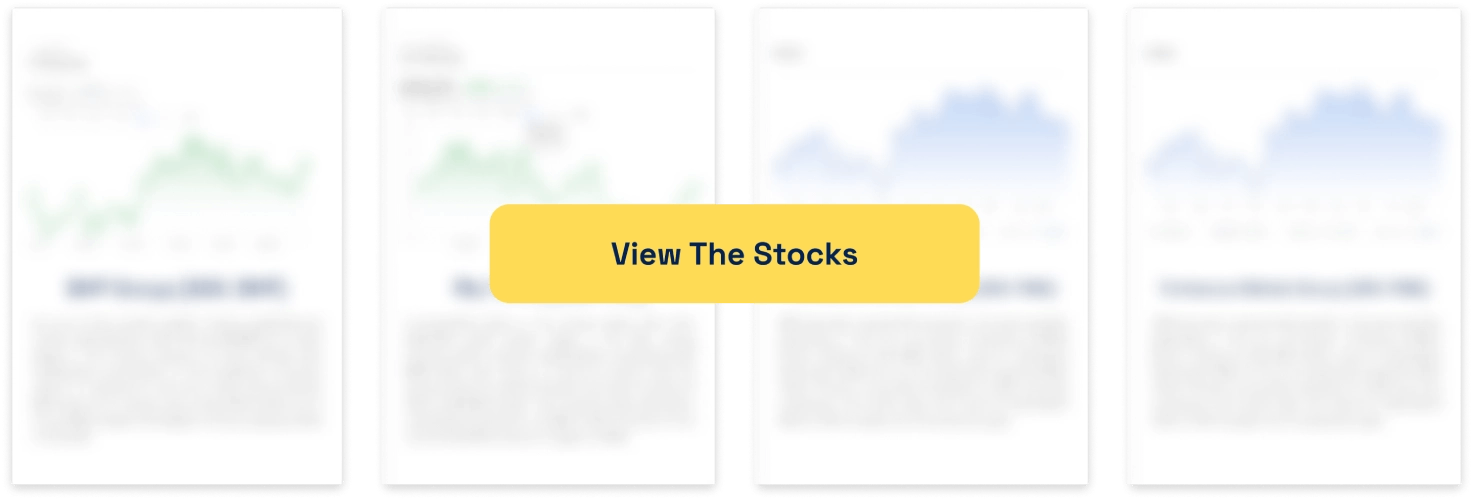What Are the Best ASX Dividend Stocks for Retirement Income in 2025?

In 2025, one of the most crucial elements of a secure retirement is a consistent income stream, and for many Australians, dividend stocks provide an effective way to achieve this. Investing in dividend-paying stocks can help supplement superannuation and ensure financial stability in retirement. In this article, we’ll explore the best ASX dividend stocks for retirement income in 2025, offering insight into some of the top-performing shares that can provide reliable returns.
Why Consider ASX Dividend Stocks for Retirement?
- Reliable Income: Dividend stocks offer the advantage of providing regular payouts, often quarterly, semi-annually or annually. These payments can be reinvested or used as a source of income during retirement.
- Capital Growth: Many dividend-paying companies also offer capital growth over the long term. Investing in these firms provides a balanced portfolio of income and growth.
- Tax Benefits: Australia offers tax advantages for dividend investors, such as franking credits. These credits allow investors to offset the tax paid by the company, effectively reducing their tax bill. This is particularly beneficial for retirees in the lower tax brackets.
- Inflation Hedge: Dividend stocks often come from established companies with stable earnings, making them less volatile than growth stocks. In times of inflation, these shares can continue to provide a steady income.
Key Factors to Consider When Selecting ASX Dividend Stocks
- Dividend Yield: This is the annual dividend income divided by the share price. A higher yield can be attractive, but it’s important to ensure that the dividend is sustainable.
- Payout Ratio: The payout ratio is the proportion of earnings a company pays out as dividends. A payout ratio that is too high may indicate that the company is paying more than it can afford.
- Dividend Growth: Companies with a history of increasing their dividend payouts year after year are often more reliable choices for retirement income.
- Industry Stability: Retirees should look for companies in stable industries, such as utilities, healthcare or consumer staples, as these are less likely to be affected by market fluctuations.
Top ASX Dividend Stocks for Retirement Income in 2025
Commonwealth Bank of Australia (CBA)
Sector: Financials
Dividend Yield: 2.6%
Payout Ratio: 78–82%
The Commonwealth Bank of Australia (CBA) is undeniably one of the stalwarts of the Australian financial sector, renowned for its reliability and strong performance. CBA offers investors a blend of dividend yield and capital growth potential, which makes it an appealing choice for those seeking a steady income stream during retirement. With its dominant position in the Australian banking market, CBA provides a wide range of banking services to both retail and business customers. This, coupled with its sound financial management, makes it one of the more stable investments on the ASX.
What sets CBA apart from many other stocks is its ability to consistently grow earnings while maintaining a sustainable payout ratio. Over the years, CBA has steadily increased its dividends, benefiting from its strong balance sheet and efficient operations. While the bank does face some regulatory risks and competitive pressures, particularly in the digital banking space, its dominant market share and ability to generate stable profits position it well for continued dividend payouts.
Why It’s Good for Retirement: For retirees, the long history of dividend stability and growth makes CBA a standout choice. The predictable dividends provide consistent income, and its market leadership offers a degree of security that many retirees value.
Telstra Corporation Limited (TLS)
Sector: Telecommunications
Dividend Yield: 3.9–4.1%
Payout Ratio: 120–130%
Telstra Corporation Limited, Australia’s leading telecommunications company, is another strong contender for those seeking reliable dividend stocks for retirement. Known for its high dividend yield, Telstra’s business model is largely recession-proof, given the essential nature of its services, which include mobile, broadband and digital television. While the telecommunications sector can be affected by technological changes and regulatory pressures, Telstra’s extensive network and dominant position in the market provide a solid foundation for future earnings and dividends.
One key consideration for retirees eyeing Telstra is its relatively high payout ratio — now about 125%. This indicates that the company is paying out a substantial portion of its earnings as dividends, but it also suggests that there may be less room for reinvestment into the business. Despite this, Telstra has managed to maintain its high dividend yield by streamlining its operations and focusing on profitability in its core services.
Why It’s Good for Retirement: With its generous dividend yield, Telstra offers retirees an attractive income stream, though investors should keep an eye on the company’s future growth prospects and the sustainability of the high payout ratio. Still, the stability and essential nature of its services make it a relatively safe option for steady retirement income.
Woolworths Group Limited (WOW)
Sector: Consumer Staples
Dividend Yield: 3.0%
Payout Ratio: 90–95%
Woolworths Group is an iconic name in the Australian retail sector, known for its dominant presence in the supermarket industry. Despite the competitive nature of the retail market, Woolworths has consistently delivered strong earnings, making it a reliable source of dividend income. The company’s core business in grocery retailing tends to remain stable even in economic downturns, as consumers always require essential goods such as food and household items.
While its dividend yield may be lower than some other stocks in this article, the company has a long track record of dividend increases, and its higher payout ratio (currently about 95%) suggests that its dividends remain sustainable. Woolworths also has a strong balance sheet and a focus on operational efficiency, which has helped the company navigate challenges such as online shopping trends and rising costs.
Why It’s Good for Retirement: Although the dividend yield may not be the highest, Woolworths is a solid choice for retirees seeking stability and long-term growth. The consistent dividend increases, along with a manageable payout ratio, make it a trustworthy option for retirement portfolios focused on steady income and low risk.
Westpac Banking Corporation (WBC)
Sector: Financials
Dividend Yield: 4.6–4.8%
Payout Ratio: 75%
As one of Australia’s four largest banks, Westpac offers an attractive dividend yield that is appealing for retirees seeking stable income. The bank has shown resilience throughout economic cycles, and despite some headwinds faced by the banking sector, such as tighter regulations and slower economic growth, Westpac has remained a steady performer. Westpac’s focus on customer service, its wide product range and its solid capital position have contributed to its ongoing ability to generate reliable earnings.
Westpac’s payout ratio of 75% signals that the company is paying out a substantial proportion of its earnings, which is typical of many Australian banks. This suggests that while Westpac is a solid dividend stock, it is also ensuring that it maintains sufficient reserves to weather any potential economic or market downturns.
Why It’s Good for Retirement: Westpac’s high dividend yield and steady financial performance make it an excellent candidate for retirees who value both income stability and the potential for long-term growth. With a strong history of paying dividends, Westpac provides a reliable source of income for retirement.
BHP Group Limited (BHP)
Sector: Materials
Dividend Yield: 4.96–4.98%
Payout Ratio: 80–90%
BHP is one of the largest global mining companies, with a diversified portfolio that includes iron ore, copper and oil. Despite being in the cyclical mining sector, BHP’s sheer size and diversification help to mitigate some of the risks typically associated with commodity-based stocks. The company’s strong earnings are driven by demand for its resources, especially in emerging markets like China. BHP’s ability to generate substantial cash flow from its mining operations has allowed it to maintain high dividend payouts.
BHP has a history of paying attractive dividends to shareholders, and its payout ratio of roughly 85% suggests a balance between rewarding shareholders and maintaining financial flexibility. The company’s strong financial position, low debt levels and commitment to shareholder returns make it a solid choice for retirees looking for a combination of income and potential capital growth.
Why It’s Good for Retirement: BHP’s solid dividend yield and its dominant position in the global mining sector make it an appealing option for retirees. Its relatively conservative payout ratio also ensures that the dividends are sustainable, even if commodity prices fluctuate.
AGL Energy Limited (AGL)
Sector: Energy
Dividend Yield: 5.6–6.8%
Payout Ratio: 150–175%
AGL Energy is a leading energy provider in Australia, with a diverse portfolio that includes electricity, gas and renewable energy sources. As the energy transition continues to evolve, AGL has positioned itself as a key player in the Australian energy sector, focusing on both traditional and renewable energy solutions. The company’s high dividend yield makes it an attractive option for retirees seeking a strong income stream.
AGL’s roughly 170% payout ratio signals very high income distribution — appealing to retirees chasing immediate returns. However, given the ongoing changes in the energy landscape, particularly the shift towards renewable energy, investors should carefully monitor how the company adapts to these changes.
Why It’s Good for Retirement: AGL’s high dividend yield provides retirees with an immediate income boost, while its diversification in energy sources gives it some protection against volatility in the sector. However, retirees should stay informed about the energy transition and how it may affect AGL’s long-term dividend sustainability.
How to Build a Dividend-Focused Portfolio for Retirement
To maximise the potential of dividend stocks for retirement income, investors should focus on building a diversified portfolio. This means spreading investments across various sectors and industries to reduce risk while maintaining a steady stream of dividends.
- Diversification: Include stocks from different sectors such as financials, healthcare and consumer staples to reduce sector-specific risks.
- Reinvestment: Reinvesting dividends through a dividend reinvestment plan (DRP) can help compound wealth over time.
- Evaluate the Dividend History: Look for companies with a long track record of increasing or maintaining dividends, as these are more likely to be sustainable.
- Focus on Quality: Prioritise companies with strong balance sheets, low debt and a history of stable earnings.
Conclusion
When selecting dividend stocks for retirement, it is essential to consider factors like yield, payout ratios and the financial stability of the companies. Stocks like Commonwealth Bank, Telstra and Woolworths offer retirees a blend of solid income and growth potential, while companies like Westpac, BHP and AGL Energy provide high dividend yields and financial resilience.
By building a diversified portfolio of reliable ASX dividend stocks, retirees can ensure a steady income stream, reduce the risks associated with any single sector, and enjoy peace of mind knowing they have solid investments backing their retirement income.
What are the Best ASX stocks to invest in right now?
Check our buy/sell tips:
FAQs
- What is the best dividend stock for retirement?
The best dividend stock for retirement depends on your risk tolerance and income needs. However, stocks like Commonwealth Bank and Telstra are solid options due to their reliable payouts and stable earnings.
- How do I invest in dividend stocks for retirement?
To invest in dividend stocks for retirement, you can purchase shares directly through a broker or use a dividend-focused exchange-traded fund (ETF). Be sure to diversify across various sectors for balanced risk.
- What is a sustainable payout ratio?
A sustainable payout ratio is one that allows a company to pay dividends while still retaining enough earnings for future growth and operations. Generally, a payout ratio under 75% is considered sustainable.
- How often do dividend stocks pay?
Dividend stocks can pay on a quarterly, semi-annual or annual basis, depending on the company. It’s important to check each company’s dividend payment schedule.
- Are high dividend yields always good?
Not necessarily. While high dividend yields are attractive, they can sometimes indicate that a company is struggling. Always check the company’s payout ratio and dividend history to ensure the yield is sustainable.
Blog Categories
Get Our Top 5 ASX Stocks for FY26
Recent Posts
Can AI predict future stock returns?
Artificial intelligence can outperform human analysts. Used together, humans and AI are particularly difficult to beat. Machine learning is a…
ASX Casino Stock Investment Analysis Guide
Investing in ASX-listed casino stocks demands a unique blend of market analysis and sector-specific insight. It is a high-stakes game…



